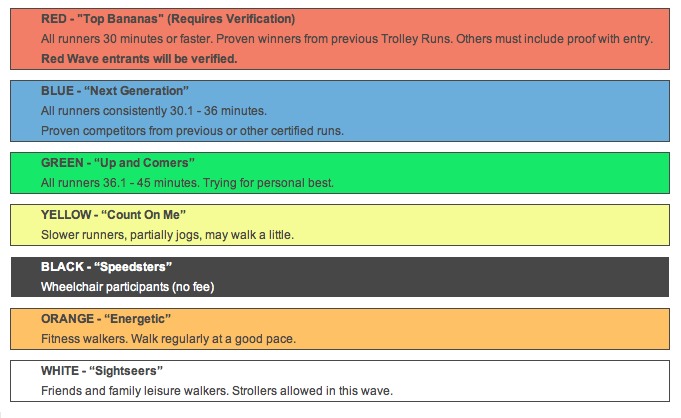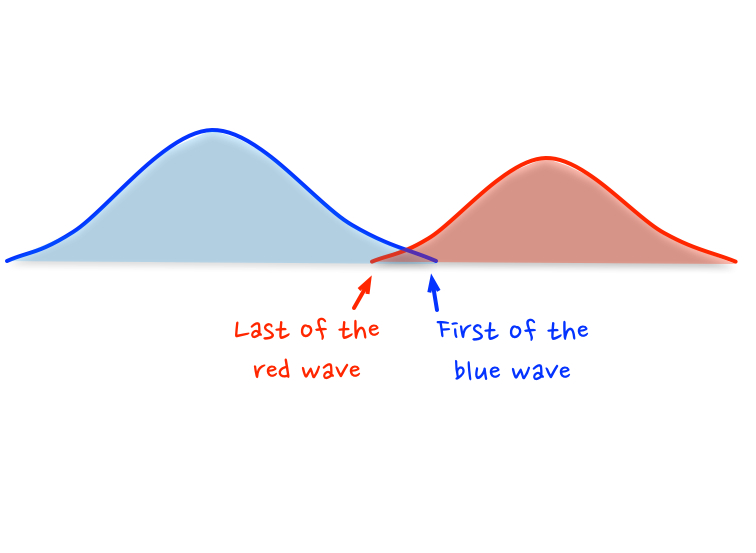SLOWEST OF THE FASTEST | Keeping Growth in Front of You
With over 11,000 runners, the Trolley Run in Kansas City is one of my favorites. It’s a 4-mile, point-to-point run that is mostly downhill making it one of my faster runs of the year. It’s in the spring and well organized with several clearly defined waves.

I’ve always run in the green wave, but last year, I ran at a 8:29 pace and finished in 33:55, so I planned to step up to the blue wave. Through a clerical error, everyone on the team I was running with was registered as part of the red wave which requires a 7:30 pace or better. A week prior to the Trolley Run, I finished a 5K at a 7:19 pace. The combination of a lucky registration mistake, recent confidence from a fast finish, and a traditionally strong performance on this downhill course gave me the extra boost to skip the blue and go straight to the red wave.
Good news, I finished under 30 minutes (29: 38) and qualified to be part of the red wave again next year. There is certainly plenty of overlap in the various waves - people in the blue wave finish in red wave times and beat red wave runners who finish in blue wave times. As an avid student of variation, I believe many things can be better understood with bell curves and two-by-two grids.
Whenever you fall in the overlap area, you have a choice - put yourself in the red wave and be considered one of the slowest in your group, or put yourself in the blue wave and be considered one of the fastest in your group. I believe I ran faster in the red wave than I would have in the blue wave. I’ll never know for sure, but I felt motivated to chase my faster peers, and I sure as heck wasn’t going to let any blues pass me. You have to be realistic when choosing your comparison group, but stretching yourself to be in a more competitive framework provides greater development opportunities.
For me, it’s better to be the slowest member in the first wave, than the fastest member of the second wave, because the more bell curve you have in front of you, the more growth you have in front of you. Plus the red wave gets to board the shuttle buses first.
COMPARED TO WHAT | 4 Ideas for Healthy Comparisons
“Division is the most powerful arithmetic operation. It makes comparisons.” ~ Sanjoy Mahajan
We all make comparisons to other people. I wish I was as fast as X; at least I’m not as unlucky as Y; can you believe Z, I would never stand for that. Sometimes these comparisons are helpful and healthy. They can serve as a perfect starting point for improvement. For example, I love content. I study the art of consuming and creating content. Generally, I think I’m pretty good at it, but when I compare myself to the following individuals, I see opportunities for growth:
- Michael Schechter - how could I begin to start producing more content consistently?
- Christopher S. Penn - how could I increase the amount of high-quality content I consume daily?
- Yuvi Zalkow - how can I make content that is more creative and contains relevant humor?
Comparisons to others performing at a higher level takes a certain confidence. For the comparison to be helpful, you have to believe you can make progress on becoming better.
On the other hand, if you are comparing yourself to an unrealistic ideal or the other extreme by viewing yourself as superior to others, comparisons can be frustrating and unhealthy. I’m not an Olympic swimmer. There are good reasons why I’m not, I don’t aspire to be one, and comparing myself to that group of elites would not only be silly, but would lead to eventual frustration and disappointment.
So how do you use comparisons for good instead of for evil? Here’s four ideas:
- Find pacesetters to chase - determine areas in which you want to excel. Seek out people who are doing those skills exceptionally well and study them, learn from them, emulate them.
- Make meaningful distinctions - why is this person so good? What specifically makes their performance better? The tweet below from Rob Delaney sums up how the critical eye of the sports commentator sees more distinctions than the average viewer.
- Set realistic expectations for improvement - don’t expect to go from zero to 60 in 3.5 seconds. Improvement takes time and consistent effort. It’s more helpful to set “completion” goals rather than “be number one” goals.
- Evaluate your performance on a wider scale - in 2008, I ran in the Potomac River Run Marathon and finished 72. Which sounds fairly good, until you hear there were only 74 finishers. When I evaluate my performance on a narrow scale against the 74, it’s easy to feel discouraged about that result. I finished third from last. But when I expand that scale and compare myself beyond those 74 runners, then I was one of only 74 people who actually finished the marathon.
Use comparisons to improve, but be smart about your reference group. And as Marcel the Shell with shoes On says when people tell him his head is too big for his body, “And then I say, ‘Compared to what?’”


